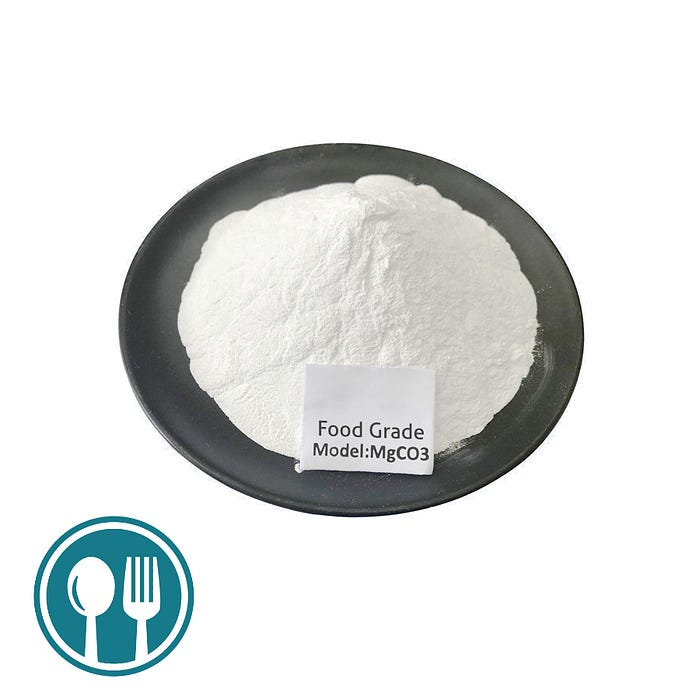At
present, there are brine soda ash method and brine ammonium bicarbonate
method in domestic production of basic magnesium carbonate with brine,
but there is no report on the production of food grade basic magnesium
carbonate.
The production process of the brine soda ash method is simple, the investment in equipment is small, and the utilization rate of raw materials is high. The ammonia recovery equipment of the brine ammonium bicarbonate method is omitted, and the NaCl and NaSO4 generated by the “three wastes” treatment can be directly returned to the salt pond for recycling. The preparation of basic magnesium carbonate by the soda ash method is mostly a high-temperature reaction. Hebei Messi Biology Co., Ltd. uses brine and soda ash as raw materials to prepare basic magnesium carbonate at room temperature.
Heavy magnesium carbonate is one of the important components of food additives, which can affect the performance of flour. Heavy magnesium carbonate was prepared according to the double decomposition reaction. The effect of magnesium crystal grains was investigated, and the crystal morphology was characterized by visual inspection and weighing.
Hebei Messi Biology Co., Ltd. stated that in the scientific formula of flour improver, food-grade magnesium carbonate is an important auxiliary component, its main function is to improve the dispersion and fluidity of flour improver, and it is an anti-caking loosening agent. Generally, the content in flour improver is 10%~15%. In view of the above characteristics, the product must be non-toxic, tasteless, harmless to human health, and have good fluidity. Its Mg0 content is between 40% and 43%, the water content should be less than 1%, and the apparent specific volume is between 1.4mL/g and 2.5mL/g (it belongs to heavy magnesium carbonate).
Read more at https://tibetmag.com/






0 Comments